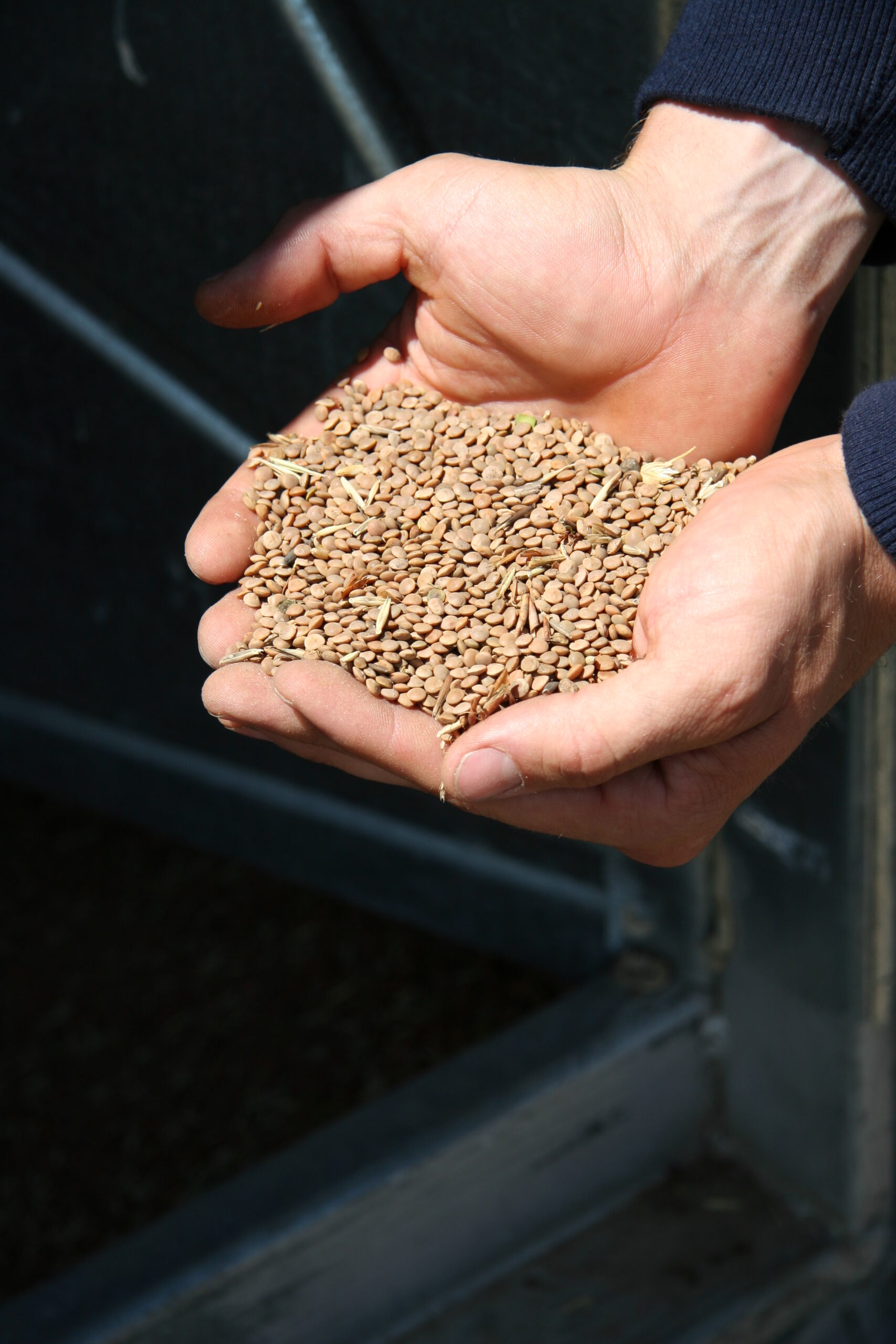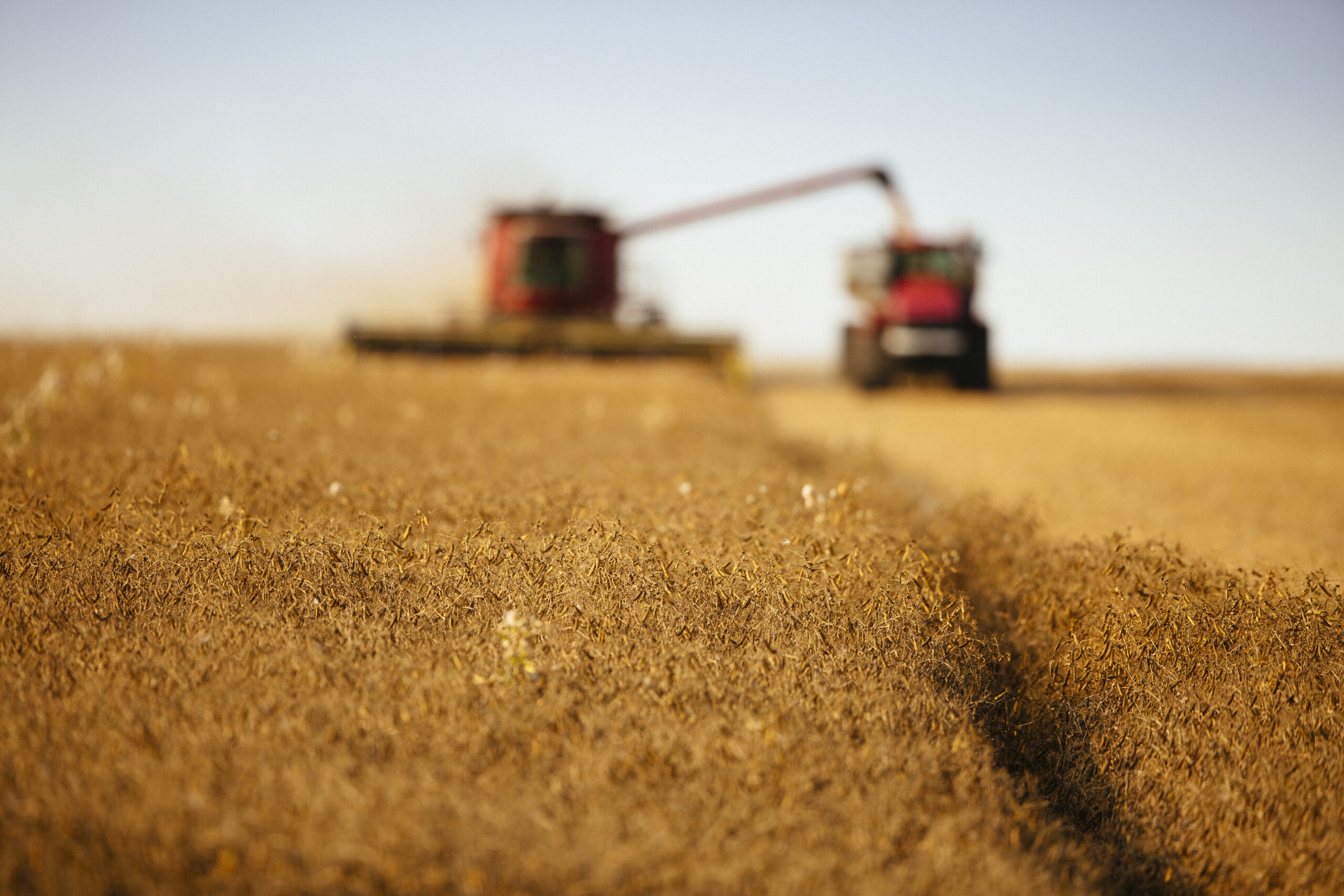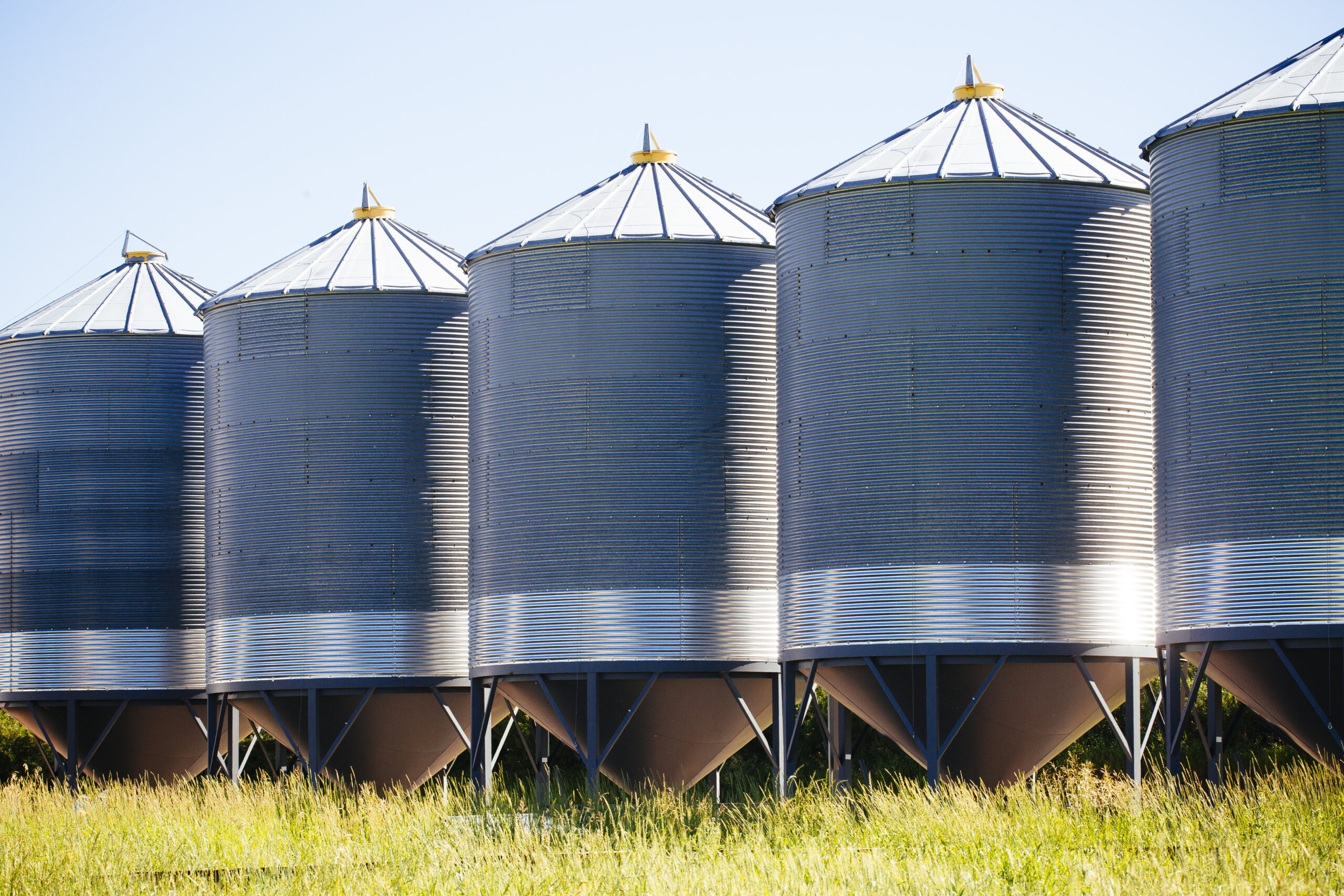By Bruce Barker, P.Ag.
The Canadian Grain Commission (CGC) sets the official grading guidelines for lentils, which are used by lentil buyers, processors, and exporters to establish grades and prices. Lentils are designated in two classes, Red Lentils and Lentils other than Red. Buyers may further segregate a lentil based on size or other marketing. For example, on written request to the CGC, a variety name can become part of the grade name: No. 1 Canada, Laird.
As the quality of lentil seed goes down, the market for the seed changes, especially with green lentils, where the product is primarily used as a whole seed where colour and visual appeal is very important. No. 1 and No. 2 green lentils are destined for premium markets that can afford to pay more, and these grades are expected to be quickly sold. Extra No. 3 heads to emerging markets that are more price sensitive, and No. 3 goes to primarily third world countries where a lower price is more affordable. Success in marketing these lower grades depends on exporter access to the markets where the grades are used.
Sample lentils are used primarily as livestock feed, and the price would be reflected in the value of the nutrients in the seed.
Canadian Grain Commission Grading Factors for Lentils
Lentil grades are not black and white, there is a range of quality within each grade. Where possible, processors will work with growers to try to improve the quality through cleaning to remove cracks, splits, and mechanical damage, sorting to remove inseparable seeds, and blending to maintain consistency of a product sold throughout the year.
Additionally, international buyers have specific requirements that may be more stringent than CGC grade determinants. For example, No. 1 Canada green lentils may have up to 2% peeled, split, and broken seed. In these premium markets, the buyers have very low tolerance for this type of damage (splits), and processors work hard to clean the products to customer standards.
Even Sample graded lentils can be upgraded depending on why the seedlot is downgraded. Frozen lentils are used as livestock feed, but if, for example, a seedlot was downgraded to Sample because of excess peeled, split, and broken seeds, it could be upgraded to No. 3 or better with careful cleaning and processing. Hail in some areas of Saskatchewan may have bruised lentil seed, which may reduce it to a Sample grade and which may be difficult to upgrade to a No. 3.
Main Grading Factors
(Candian Grains Commission: https://www.grainscanada.gc.ca/en/grain-quality/official-grain-grading-guide/18-lentils/grading-factors.html)
Ascochyta – Ascochyta is a fungal disease that attacks the lentil plant and seed. Any degree of white fungal growth on the seed is considered damaged.
Bleached – Bleached seeds have a whitened seed coat that is distinctly faded from the natural red colour of sound lentils. The discoloration must affect the entire seed coat. Lentils having a lighter pink shade that are contrasting with the overall sample are considered sound.
Colour (Lentils, Other Than Red) – Colour is determined on the basis of the cleaned sample after the removal of stained and damaged lentils:
- Good natural colour: sound and well matured with a good natural colour
- Reasonably good natural colour: moderately immature, lightly earth-tagged, or lightly discoloured from storage or other natural causes
- Fair colour: immature but not green, moderately earth-tagged, or otherwise moderately discoloured from natural causes
- Poor colour: cannot be considered of fairly good colour but is not severely earth-tagged, immature, or severely stained
- Sunburned: the normal discolouration of lentil that occurs during storage – the color may vary from light tan to brown or very dark brown, depending on the duration and conditions of storage
- Blue-black: the dark blue hull discolouration that is natural on some lentil
Colour (Red Lentils) – Colour is evaluated after the removal of damaged lentils (excluding wrinkled). Bleached and copper seeds are evaluated to determine the overall colour.
Damage – Damaged lentils may be peeled, split, broken, sprouted, distinctly green, frost damaged, distinctly deteriorated, or discoloured by weather or disease, insect damaged, heat damaged, or otherwise damaged in a way which materially affects quality.
Frost Damage – Frost damage is normally indicated by a combination of wrinkling and close adherence of the seed coat to the cotyledon. The seed coat may be translucent in appearance, and the cotyledons are brittle in texture.
Stained – Stained lentils includes (only applies to lentils, other than red):
- Mottled seeds: seeds with a significant number of distinct spots on the seed coat
- Water spot: seeds with distinct brown discolourations on the seed coat
- Ascochyta: seeds with dark-coloured lesions on the seed coat. Seeds with white fungal growth are also considered as damaged. See Ascochyta.
- Blue-black: seeds of green lentils with significant blue-black discolouration of the seed coat. Seeds of varieties of lentils with dark-green speckled or coloured seed coats are considered as contrasting colours.
Wrinkled – Wrinkled seeds are characterized by a seed surface that has sharp ridges and pronounced depressions that could also be described as seed coat folds and indents. Wrinkles may be evident only on one side of the lentil. Lentils that only have dimpled seed coat or folds restricted only to the outside ring of the seed are considered sound. The red lentil wrinkled guide may be used to assist in the determination of wrinkled seeds.
Foreign Material – includes tolerances for Ergot, excreta, insect parts, Sclerotinia, stones, and other foreign material that is not lentil.
Getting a representative harvest sample for marketing the lentil crop will be important for growers. This will help buyers assess and market your lentil crop at the best possible price and grade.
Export standards indicate that lentils are considered commercially cleaned when they contain 0.2% or less by weight of dockage material. Shipments that do not meet the standards for commercial cleanliness are referred to as not commercially clean. Such shipments are allowed only with the permission of the CGC.
Post-Harvest Storage to Maintain Quality
Avoid unnecessary handling and use conveying equipment that is gentler on the lentil seed when moving. Belt conveyors cause much less damage than steel flighting augers. Lentils can also be damaged when dropped into a bin from significant height and it may be necessary to use equipment (ex. bean ladders) to soften the drop. If using augers, use large diametre augers, run slowly, and full.
Storage at 14% moisture is considered safe for longer-term storage and is recommended for green lentils to minimize seed coat damage during handling. For red lentils, buyers prefer seed moisture content to be 13% or less to improve the quality and efficiency of dehulling and splitting processes.
The Prairie Agricultural Machinery Institute (PAMI) says little research has been done on storing, aeration, or drying of lentils, but the same concepts that apply to wheat or peas also apply to lentils. The drier and cooler the grain, the safer it is during storage. The target temperature for all grains, provided they are dry, is 15 degrees or lower.
This is illustrated by Noel White, formerly with the Cereal Research Centre with Agriculture and Agri-Food Canada at Winnipeg, who developed safe storage charts for different grains, including peas but not lentils. The pea storage information was extrapolated to green and red lentils.
Table 1. Moisture Content
| Dry | Tough | Damp | |
|---|---|---|---|
| Green Lentil | Less than 14% | 14.1 to 16% | Greater than 16% |
| Red Lentil | Less than 13.1% | 13.1 to 16% | Greater than 16% |
Even when lentils are harvested dry, some form of aeration may be necessary to reduce the grain temperature in the bin to maintain safe storage and grain quality. This is especially important for green lentils that went into the bin at a high temperature. The green lentil seed coat oxidizes at a high temperature, quickly turning brown, which results in a lower grade.
PAMI indicates that the same principles used with aeration and grain drying wheat or peas also apply to lentils. Aeration to cool the grain uses low airflow fans operated when the outside temperature is lower than the grain temperature. Natural air drying requires sufficient airflow to dry the grain and the air’s capacity to dry lentils will depend on the air temperature, air relative humidity, grain temperature, grain moisture content, and airflow rate.
Table 2. Suggested Number of Weeks for Safe Storage of Green and Red Lentils at the Specified Grain Moisture Content and Storage Temperature
| Storage Moisture Content | ||||||
|---|---|---|---|---|---|---|
| Temp (OC) | 12 | 13 | 14 | 16 | 18 | 21 |
| 25 | 31 | 16 | 13 | 7 | 4 | 2 |
| 20 | 55 | 28 | 23 | 13 | 7 | 4 |
| 15 | 100 | 50 | 40 | 20 | 12 | 6 |
| 10 | 200 | 95 | 80 | 38 | 20 | 21 |
| 5 | 370 | 175 | 150 | 70 | 39 | 20 |
| = Safe Long Term | ||||||
| = Safe Storage | ||||||
| = Safe Short Term | ||||||
| = High Risk, Unsafe or Quality at Risk | ||||||
Source: Extrapolated from pea data (Sokhansanj 1995)
Red lentil will be similar to pea (McVicar, 2006)
Lentils are usually harvested in time to take advantage of good natural air drying conditions (warm and dry). Information in the Growing Pulses section of Saskatchewan Pulse Growers’ website indicates that if a bin is equipped to adequately dry wheat with a natural air system, it will work for lentils.
If heated grain drying is needed, air temperatures should not exceed 45 degrees to preserve germination, and the sample should not be dried more than 4-5% points per pass through the dryer. Lentil seed can be easily damaged in the drying process so caution is needed. Talk to your lentil buyers to ensure you are drying the crop safely without risk of damaging the grade.
Research is lacking on storing poor quality lentils, but the same principles of good handling and storage would likely apply. Cool and dry the grain to below 10 degrees if possible, monitor it with temperature cables and sampling, and sell as soon as possible.
As has been mentioned before, work with your buyer on best practices to harvest, store, and maintain your lentil grain quality. It is a relationship that benefits all in the pulse industry.



